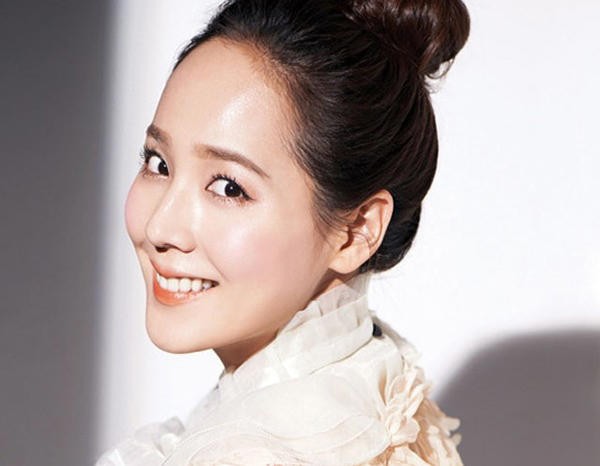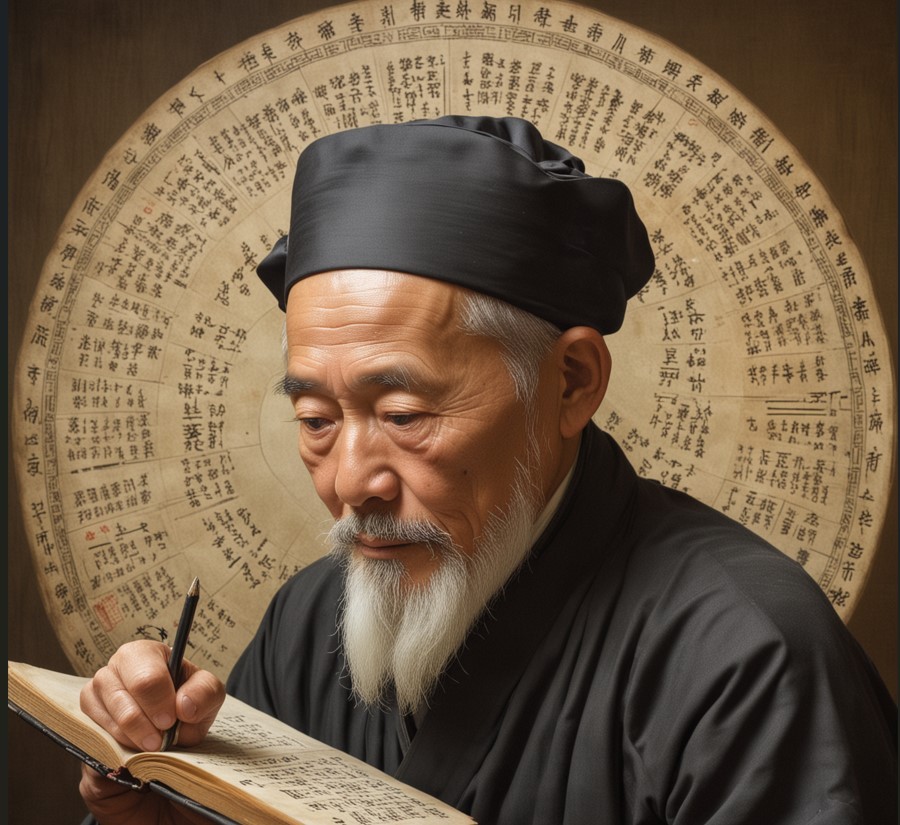The Art of Physiognomy: Rich or Poor Expressed on the Face
| Table of Contents |
Palmistry And Modern Science
A Canadian scientific study found that by observing a person's facial expressions, you can tell whether they are poor or rich, with an accuracy rate of up to 53%.
The University of Toronto's Faculty of Arts and Sciences conducted a study, using a $75,000 annual family income as the baseline and dividing students who agreed to participate in the experiment into two groups: One group had a low-income family earning less than 60,000 USD per year, while the other group earned more than 100,000 USD per year. The experimenters were then asked to photograph "emotionless faces."
 |
| Palmistry And Modern Science |
They then showed the photos to another group of experimenters and asked them to guess whether the people in the photos were wealthy or impoverished. Surprisingly, these subjects' judgments were 53% correct, which is significantly higher than the probability of random guessing. According to the findings of this study, people can judge people's living standards and economic conditions simply by "looking at their faces."
According to Nicholas O. Rule, a psychology professor at the University of Toronto, there is a type of neuron in the brain that specializes in recognizing faces. When we look at another person, the first thing we notice is their face.
According to research, a person's external emotional habits will remain etched on the face as time passes. Rich people appear more "satisfied" because a happy mood is often associated with wealth and contentment. People who are poor or disadvantaged are more likely to frown and appear depressed.
Professor Rule went on to say that your face is a permanent reflection of what you've been through, and even if you don't show it, traces of those emotions are always present.
As a result, even if this person's face is emotionless, with no smile or other expressions, our brains can still make assumptions about socioeconomic conditions and status, as well as that person's class.
But there are always exceptions. Professor Rule also explains that if you can always maintain a cheerful face and a happy mood, regardless of a person's actual income, "you will look very rich."
The Ancient Chinese: The Art of Physiognomy
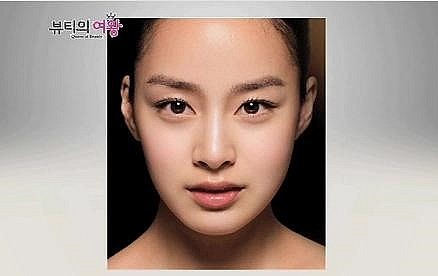 |
| The Art of Physiognomy |
When discussing the history of physiognomy, we must mention the famous physiognomy master Zeng Guofan (November 26, 1811 - March 12, 1872) of the Qing Dynasty, China's last feudal dynasty. He was a late Qing dynasty Chinese statesman and military general. He is best known for organizing and raising the Xiang Army to assist the Qing military in suppressing the Taiping Rebellion and restoring the Qing Empire's stability. Zeng was known not only for his strategic perception, administrative skill, and noble personality in Confucian practice, but also for his ruthlessness in putting down rebellions.
Zeng Guofan has a famous way of judging and reasoning about "knowing people, using people": "Work is nothing else but using people, and using people must first know people."
When it comes to getting to know people, Zeng Guofan has a unique set of techniques known as physiognomy. In seven sentences, summarize the subject of physiognomy:
1. Evil or Righteous People: Read eyes and nose
Zeng Guofan believes that the eyes and nose can reveal whether a person is evil or righteous.
Each person's eyes are the windows to their soul. The eyes reveal how virtuous a person is. People who have the habit of glancing at others, or when speaking, their eyes are always absent-minded and unfixed, not daring to look directly at the other person, are often lacking in sincerity.
2. Real or Fake: Look at your lips
The lips can reveal whether a person is sincere, kind, or not.
Because the mouth is the primary entry and exit organ of the human body, people with kind lips are typically people of high moral character, who are honest and trustworthy. A person who is overly talkative or gossips about gossip, on the other hand, should not be in a close relationship.
Similarly, people with thick lips tend to be generous and enthusiastic extroverts, whereas people with thin lips tend to be skilled communicators who "change their ways" (change their hearts).
3. Career status: Look at temperament and temperament
Zeng Guofan believes that whether or not a person can achieve fame is primarily determined by his or her charisma. What exactly is temperament? That is a person's temperament and personality.
In a group of strangers, there is always one person who can quickly become the center of attention. It is simple to persuade others when one has courage. This type of person can naturally respond quickly, accomplish great things, and achieve fame and fortune. This temperament has built up over time, is condensed on the body, and cannot be imitated.
4. Rich people: Look at the spirit
There are people in life who are always mentally sluggish and have sad faces; this type of person is commonly referred to as a "suffering face." People with this depressed expression are unlikely to become wealthy or noble. Rich people, on the other hand, are mostly people with high spirits, wide bodies, and fat bodies.
Furthermore, auspicious wealth is found not only in a cheerful spirit, but also in hard work. A person who is always working hard and looking forward will undoubtedly have a full spirit, increasing his or her chances of achieving a great career and reaping auspicious wealth.
5. Steadfast and decisive people: Look at your hands
Zeng Guofan believes that everyone should check their hands, regardless of whether they have an opinion or are decisive. "People with clear lines on their palms have a focused mind," he said. People with shallow and chaotic palm lines, on the other hand, are mentally disturbed and restless."
The so-called concentration of mind is having an inner opinion, not being chaotic in the face of danger, and being direct and clear.
Most people with long fingers and soft hands have a strong will, which allows them to excel in their careers.
6. Life is turbulent: Look at your feet
Storms are an unavoidable part of everyone's life.
Some people live a life without waves or wind, while others live a life filled with ups and downs and unexpected changes. According to Zeng Guofan, whether or not a person encounters difficulty is primarily determined by their feet.
Legs that are thick, long, straight, and flat are rare. A person like this walks steadily and does not trip easily. Horses were regarded similarly by the ancients. Legs must be spacious, stable, and strong. Such a person will be truthful, not easily swayed, and will take every precaution. As a result, they make few mistakes and experience few turbulences in their work and life.
It is difficult for those whose steps are uncertain to avoid disasters throughout their lives.
7. If you want to know the rules, it's all in the words
These two sentences are not physiognomy, but Zeng Guofan considers them to be an important way to use and know people. Look at a person's expressive language to determine whether his or her work is organized or not, and whether or not his or her thinking is clear.
Speaking in few words but with a lot of meaning can hit the key point, demonstrating that this person has a plan and rules. Speaking haphazardly, asking one thing and answering another, on the other hand, is often a sign of chaotic, disorderly thinking.
Epilogue
The proverb "appearance depends on the mind" is old.
As a result, a person's appearance can reveal something about their personality.
Although at first glance only consisting of seven sentences, Zeng Guofan's physiognomy covers a wide range of topics, including appearance, actions, and language. It's easy to see through if you understand these seven sentences with clarity. individuals worldwide.
 |
| Zeng Guofan |
Physiognomy Through Eyes, Nose, MouthPhysiognomy is the assessment of a person’s character or personality from his/her outer appearance, especially the face. Do you want to check it out? l. Eye– Fierce and scary : leader type – Big and mild : expressive, popular – Small : patient, painstaking – Projected : keen and mature – Right and left not balanced : no good conjugal harmony – Brown eye : bright but careless – Black eye : pure-hearted, fervor – Narrow between eye & eyebrow : need effort and time to succeed – Broad between eye & eyebrow : become popular person – One double eyelid : introspective, patient – Two double eyelid : garish and opulent – Two different sizes : multiple personality – Thin : responsible, friendly – Long horizontally : keen and broad-minded – Deep : parsimonious, sad – Small pupil : well-behaving, steady 2. Nose– Bent nose : combative – Projected nose : money is everything – Round nose : optimist rich – Baby like nose : lack discernment – Lined nose : bad luck – Drooping nose : no good leader – Dot on top of nose : brings trouble – Dirty nose : poor – Upturned nose : intelligent, lack of bravery and patience – Fat nose : healthy, sincere, business man – Low nose : good sociability – High nose : ambitious, aspiring – Thin nose : unhealthy, lack of life energy – Pointed nose : artist, friendly 3. Mouth– Big mouth : resolute, active, good business man – Small mouth : creative, artist, elegant, frugal – Drooping mouth : obstinate, intransigent, resolute, prodigal – Ascended mouth : faithful, devoted, no luck of money & marriage – Thick upper lip : lovely, homely, strong – Thick lower lip : marked personality, selfish, intransigent – Pointed mouth : austere, fair, no luck of offspring |
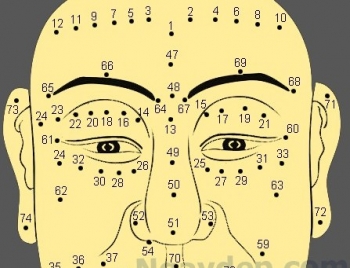 Physiognomy: Moles on Men's Face Reveals Personality and Destiny Physiognomy: Moles on Men's Face Reveals Personality and Destiny Without the assistance of a physiognomy specialist, KnowInsiders helps you decipher a man's personality and destiny based on the location of his moles on his ... |
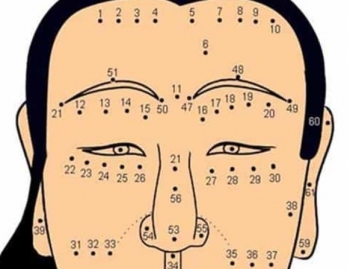 Physiognomy: Moles on Women's Face Reveals Personality and Destiny Physiognomy: Moles on Women's Face Reveals Personality and Destiny Based on physiognomy, KnowInsiders can help you read a woman's personality and forecast her future based on the location of her facial moles. |
 Read Women's Palms For Career with 5 Simple Tips Read Women's Palms For Career with 5 Simple Tips Can we rely on the palm lines to know which jobs we should choose? In this article, KnowInsiders guides how to read palmistry for women. |

